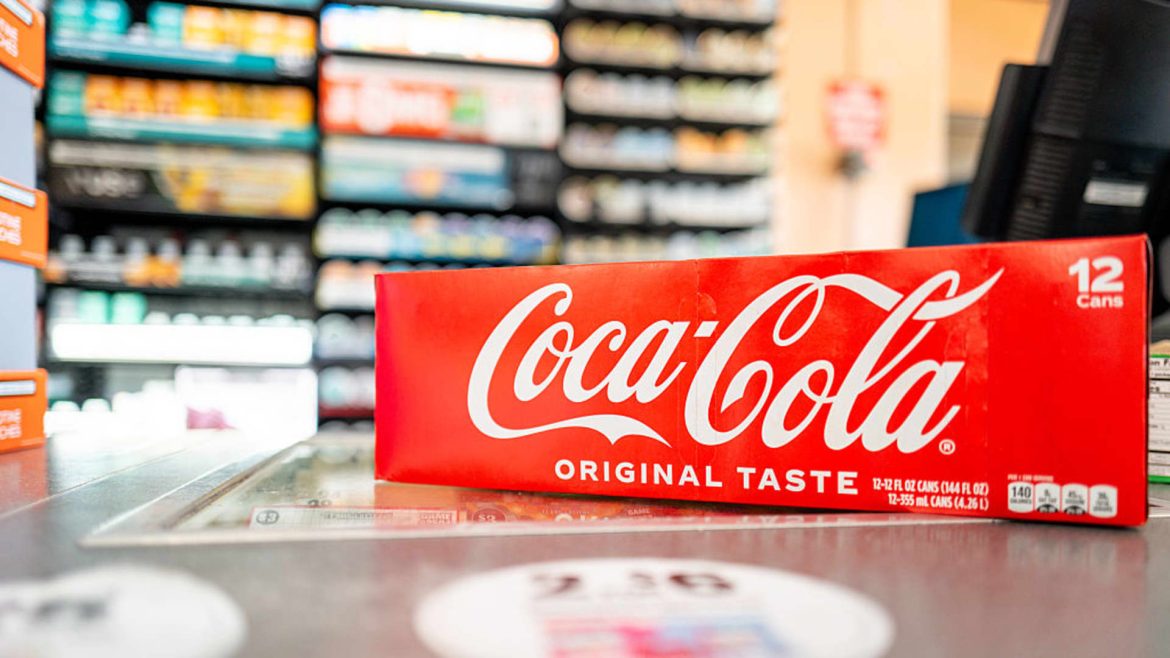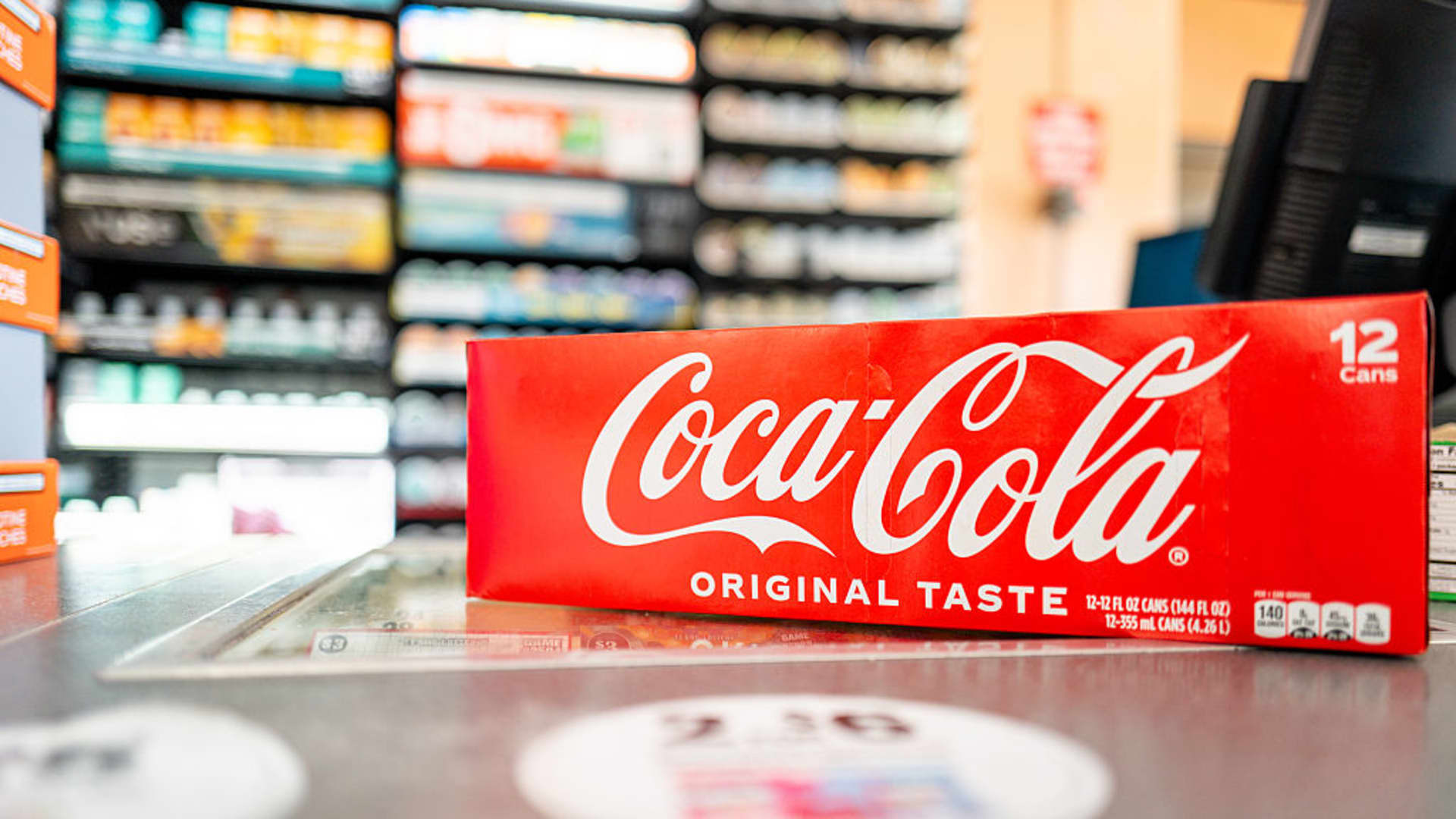Coca-Cola’s Q2 2025 Earnings: A Strategic Analysis
Introduction: The Beverage Giant’s Moment of Truth
As Coca-Cola prepares to unveil its Q2 2025 earnings, the beverage industry and financial markets are poised for a pivotal moment. This report represents more than just quarterly financials; it offers a snapshot of the company’s strategic resilience, innovation capabilities, and adaptability in an ever-evolving global marketplace. With consumer preferences shifting, competitive pressures intensifying, and sustainability concerns growing, Coca-Cola’s performance will be scrutinized through multiple lenses.
The Financial Forecast: Deciphering Analyst Expectations
Analysts have set their sights on specific financial targets for Coca-Cola’s Q2 2025 performance, providing a baseline for investor expectations. The consensus anticipates an Earnings Per Share (EPS) of $0.83, marking a slight decline from the $0.84 reported in the same quarter of the previous year. Revenue projections stand at approximately $12.55 billion, indicating a modest 1.5% year-over-year growth.
EPS Expectations: The Cost Management Challenge
The slight dip in EPS projections raises questions about the company’s ability to manage rising input costs, navigate currency fluctuations, and optimize marketing expenses. Investors will be particularly interested in Coca-Cola’s cost management strategies and their effectiveness in mitigating these pressures. The company’s ability to balance operational efficiency with strategic investments will be a key focus.
Revenue Growth: The Slowdown and Its Implications
The anticipated 1.5% revenue growth represents a deceleration compared to previous quarters. This slowdown could be attributed to several factors, including increased competition, changing consumer preferences, and macroeconomic headwinds in certain regions. Investors will seek clarity on the specific drivers behind this deceleration and the strategies Coca-Cola is implementing to reignite growth.
Diversification and Innovation: The Future of Coca-Cola
Coca-Cola’s long-term success hinges on its ability to diversify its product portfolio and embrace innovation. The company has been actively expanding into healthier beverage categories, such as juices, bottled water, and sports drinks, to cater to health-conscious consumers.
Strategic Acquisitions: Expanding the Portfolio
Coca-Cola has a history of strategic acquisitions to bolster its product offerings. Any recent acquisitions and their contributions to revenue and market share will be closely examined. Investors will look for evidence that these acquisitions are driving growth and enhancing the company’s competitive position.
Product Innovation: Adapting to Consumer Trends
The success of new product launches is a critical indicator of Coca-Cola’s ability to adapt to changing consumer preferences. Investors will be keen to understand the performance of recent innovations and their potential to drive future growth. The company’s ability to innovate and stay ahead of market trends will be a key focus.
Global Footprint: Navigating Emerging Markets and Challenges
Coca-Cola’s global presence is both a strength and a challenge. Emerging markets offer significant growth opportunities, but they also come with unique complexities, including political instability, currency volatility, and varying consumer preferences.
Emerging Market Performance: Opportunities and Risks
Investors will be keen to assess Coca-Cola’s performance in key emerging markets, such as India, China, and Africa. These regions hold immense potential, but success requires a deep understanding of local market dynamics. The company’s ability to navigate these complexities and capitalize on growth opportunities will be closely scrutinized.
Currency Fluctuations: Mitigating Financial Risks
Currency fluctuations can significantly impact Coca-Cola’s earnings, especially when converting revenues from international markets back to the US dollar. The company’s hedging strategies and their effectiveness in mitigating currency risk will be closely examined. Investors will look for evidence that Coca-Cola is effectively managing these financial risks.
Geopolitical Risks: Adapting to a Changing Landscape
The global political landscape is constantly evolving, and geopolitical risks can disrupt Coca-Cola’s operations in certain regions. Investors will assess how the company is managing these risks and adapting its strategies accordingly. The ability to navigate geopolitical challenges will be a key focus.
Competitive Landscape: The Battle for Market Share
Coca-Cola operates in a highly competitive beverage market, with PepsiCo being its primary rival. The performance of PepsiCo, particularly its recent earnings report, sets a benchmark for Coca-Cola.
Market Share: The Battle for Consumer Preference
Investors will closely monitor Coca-Cola’s market share in key beverage categories and regions. Any significant shifts in market share could indicate a change in competitive dynamics. The company’s ability to maintain and grow its market share will be a key focus.
Competitive Strategies: Differentiating in a Crowded Market
Coca-Cola’s strategies for competing with PepsiCo and other beverage companies will be a key focus. This includes pricing strategies, marketing campaigns, and distribution partnerships. Investors will look for evidence that Coca-Cola is effectively differentiating itself in a crowded market.
Factors Influencing Coca-Cola’s Stock
Several factors beyond the earnings report can influence Coca-Cola’s stock price. These include overall market sentiment, interest rate changes, and investor confidence.
Dividend Yield: A Key Attraction for Investors
Coca-Cola is known for its consistent dividend payouts, making it an attractive investment for income-seeking investors. The dividend yield and the company’s ability to maintain or increase it are important considerations. Investors will look for evidence that Coca-Cola is committed to delivering value to shareholders.
Stock Repurchase Programs: Signaling Confidence
Stock repurchase programs can boost earnings per share and signal confidence in the company’s future prospects. Investors will be keen to see if Coca-Cola announces any new repurchase programs. The company’s ability to execute these programs effectively will be a key focus.
Analyst Ratings: Shaping Investor Sentiment
Analyst ratings can influence investor sentiment towards Coca-Cola stock. Changes in analyst ratings, price targets, and recommendations can trigger buying or selling activity. Investors will look for evidence that analysts are bullish on Coca-Cola’s future prospects.
The Digital Age: Marketing and E-commerce
Coca-Cola is adapting its marketing strategies to the digital age, investing heavily in online advertising, social media campaigns, and e-commerce initiatives.
Digital Marketing Effectiveness: Measuring ROI
Investors will want to see evidence that Coca-Cola’s digital marketing efforts are generating a positive return on investment. Metrics such as website traffic, social media engagement, and online sales will be closely monitored. The company’s ability to effectively leverage digital marketing will be a key focus.
E-commerce Growth: Expanding Online Presence
The growth of e-commerce is transforming the beverage industry, and Coca-Cola is actively expanding its online presence. The company’s e-commerce strategy and its impact on sales will be closely examined. Investors will look for evidence that Coca-Cola is effectively capitalizing on the e-commerce opportunity.
Sustainability Initiatives: A Growing Priority
Sustainability is becoming increasingly important to consumers and investors alike. Coca-Cola has launched various sustainability initiatives, focusing on water conservation, packaging reduction, and carbon emissions.
Environmental Impact: Reducing the Carbon Footprint
Investors are paying closer attention to Coca-Cola’s environmental impact and its efforts to reduce its carbon footprint. The company’s progress in meeting its sustainability goals will be assessed. Investors will look for evidence that Coca-Cola is committed to environmental stewardship.
Social Responsibility: Making a Positive Impact
Coca-Cola’s social responsibility initiatives, such as community development programs and ethical sourcing practices, are also gaining importance. Investors want to see that the company is committed to making a positive impact on society. The company’s ability to integrate social responsibility into its business strategy will be a key focus.
Conclusion: Decoding the Fizz
Coca-Cola’s Q2 2025 earnings report is more than just a collection of numbers; it’s a window into the company’s strategic direction, its ability to adapt to changing market dynamics, and its commitment to long-term growth. By carefully analyzing the key metrics, scrutinizing the underlying factors, and understanding the broader market context, investors can gain valuable insights into Coca-Cola’s future prospects and make informed investment decisions. The anticipation surrounding this earnings release underscores the enduring significance of this beverage giant in the global economy. As Coca-Cola navigates the complexities of the modern marketplace, its ability to innovate, adapt, and deliver value will determine its long-term success. The Q2 2025 earnings report will provide a crucial snapshot of the company’s progress on this journey.





